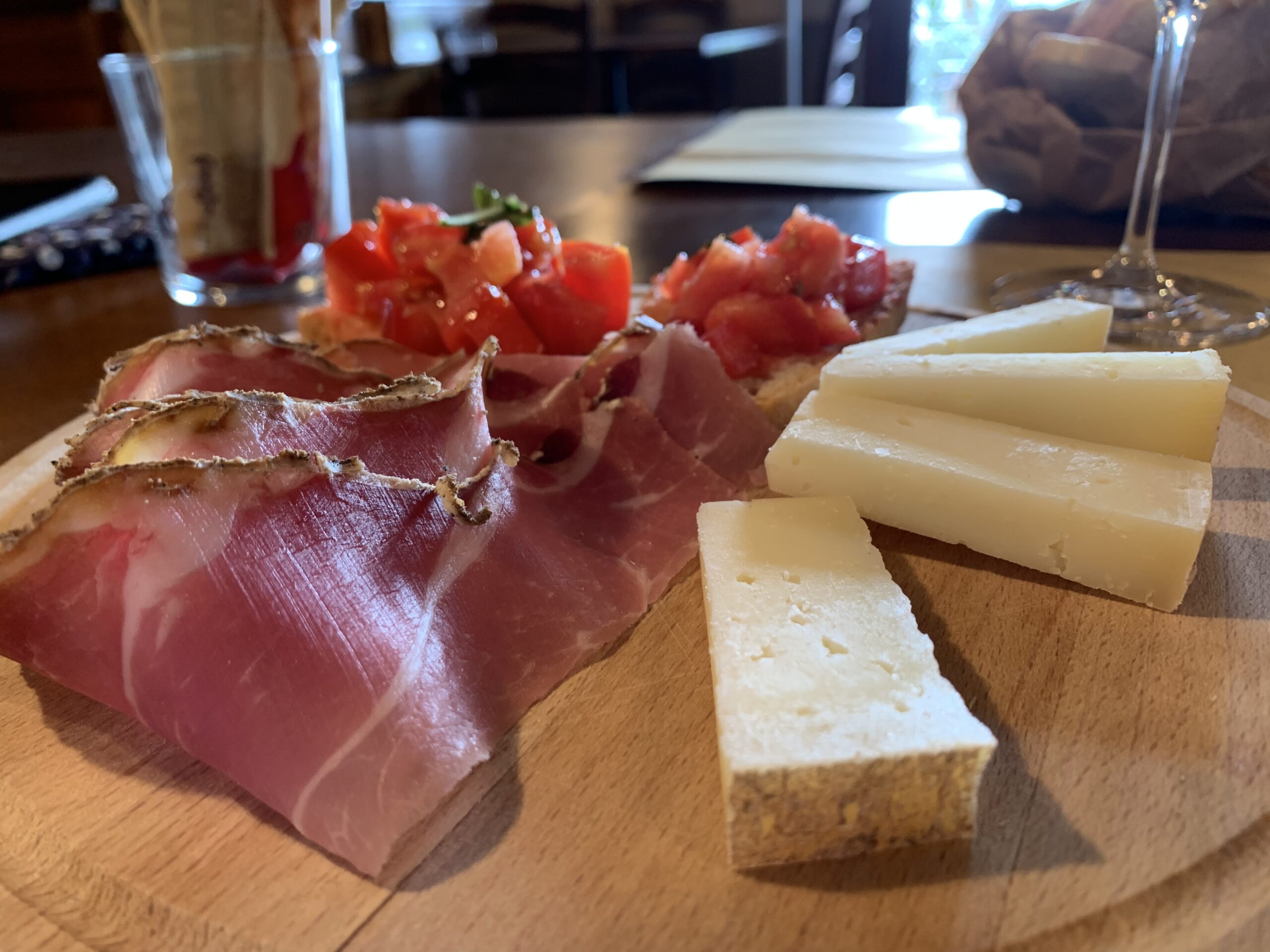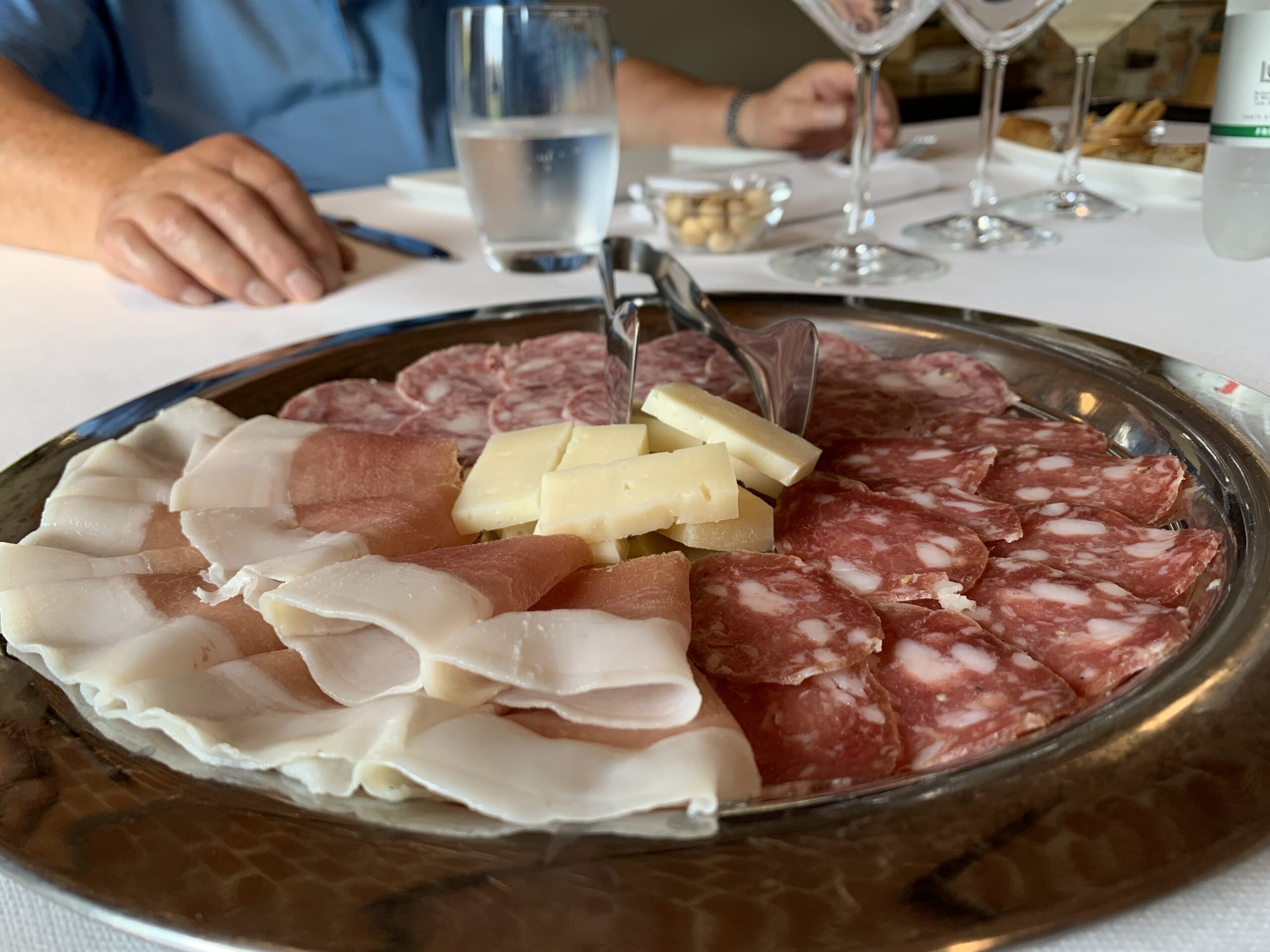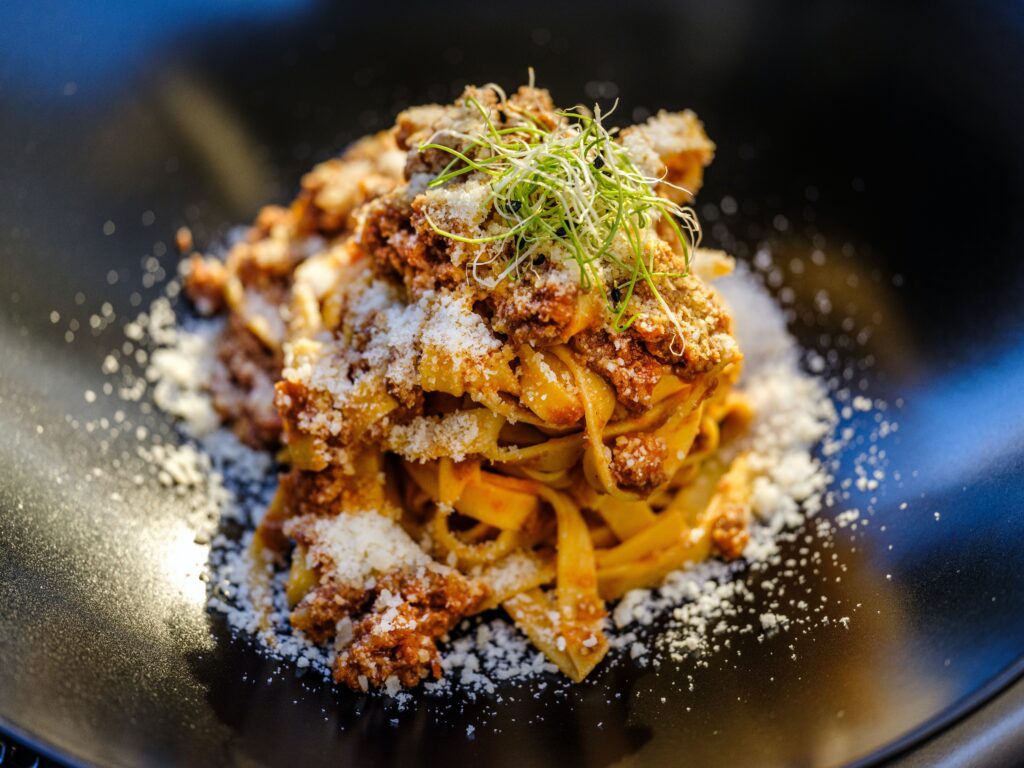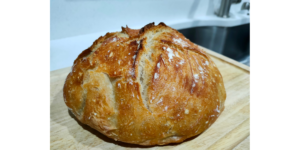Pancetta, guanciale and bacon are three commonly used ingredients in Italian cuisine and also are gaining a foothold in American cuisine as well. When used correctly, they add a rich variety of flavor to many dishes and are magic when you find the highest quality. Because of their similar qualities, they are often confused with one another and used interchangeably which isn’t necessarily a good thing, but never fear. I’m going to go over some of the basic differences that exist between these delicious, cured meats as well as give you a couple of authentic Italian dishes to use them in.

Pancetta
Sometimes called “Italian bacon”, pancetta is a pork belly side, salted and cured with pepper, spices and rolled into a casing. It is then potentially dried/cured for several months. It is not smoked like bacon. It’s also NOT what is used in the classic Italian recipes of Spaghetti Carbonara and Pasta alla Gricia. Carbonara consists of quite simply guanciale, pepper, pecorino romano cheese, olive oil, salt with a bit of the starchy water and eggs. Pancetta is a classic ingredient that can be found in Bolognese Ragu.
Guanciale
Guanciale is the pig jowls or cheeks which are triangular in shape and have been rubbed in salt, pepper, sometimes garlic and other spices and allowed to dry for at least three months. It has a shorter shelf life once cut into and should be used within a month of opening it. It should also be trimmed of any the hardened meat on the outside. It is very rich and flavorful and what is used to make Carbonara and Gricia.
Bacon
A staple in American cuisine, it can be found on burgers, in sauces, soups, served with eggs and even found in martinis and desserts. (As a side note, my personal feeling is that many times bacon is used in excess and dominates other proteins it is placed with and does not allow the authentic flavor to shine through. This happens a lot with scallops or filet mignon.) Bacon is the sides and belly of pigs which can then be smoked or naturally cured. It is found in a range of different styles and flavors and is delicious!
I hope that this clears up some of the confusion with these three ingredients and when to use each one appropriately.
You can find more information on cooking, wine recommendations and more by following me on social media.
#EatDrinkExplore: Pro tip Look for Guanciale and Pancetta that are made in Italy if you cannot find a small local producer.




